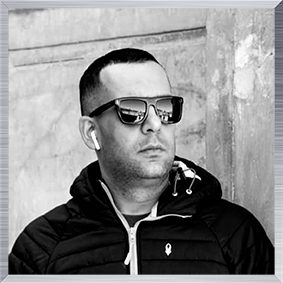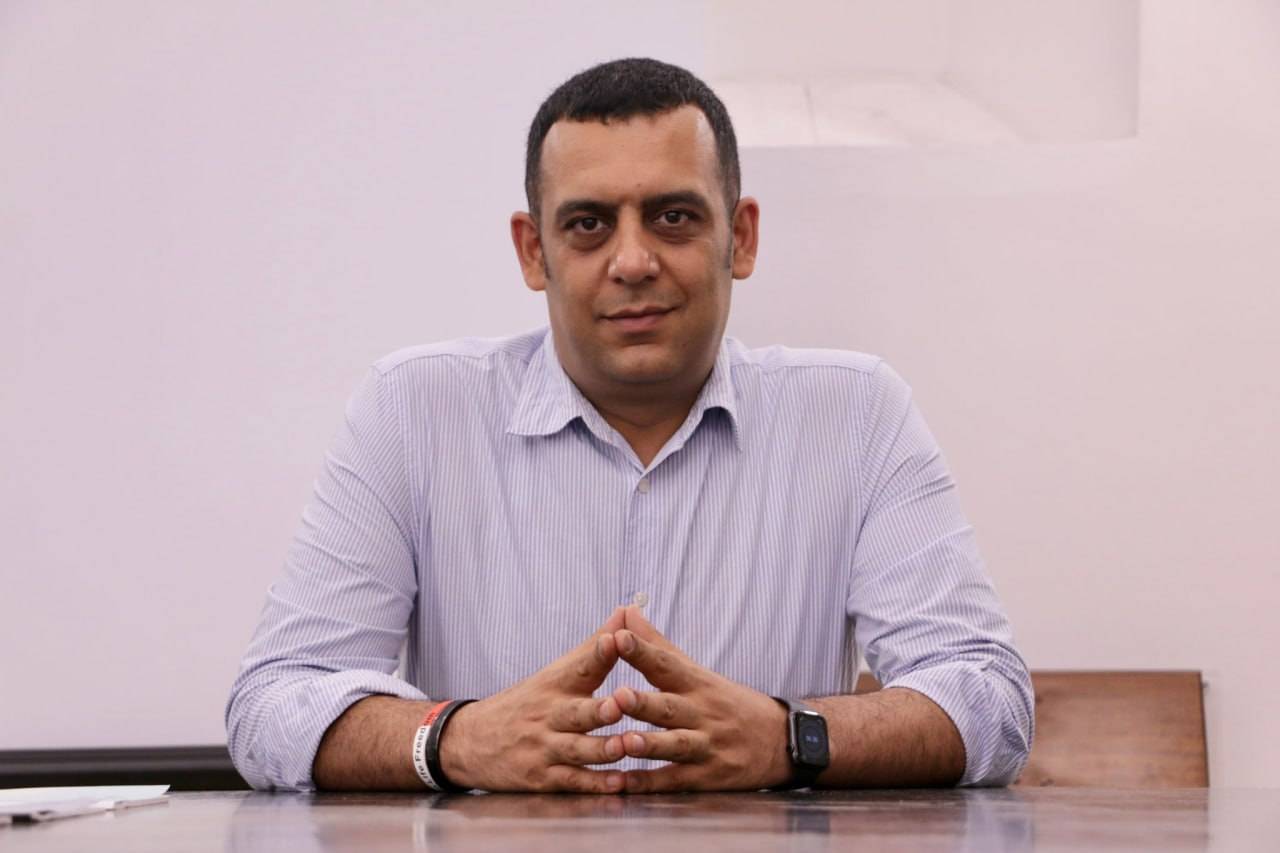How to Write a Well- crafted Artist Resume?
Successful artists use an impressive resume to emphasize their artistic creativities ranging from particular abilities and artistic backgrounds to art exhibitions and relevant matters. The significance of constructing an artist›s resume is plain as day, since it helps them shape their identity in the art world and achieve their goals. Every person on the planet needs a resume, whether an artist, a doctor, an engineer, a director, a teacher, a dealer, or a writer; an artist›s resume illustrates their main achievements and success. Due to minor differences between the two, some people think of CV and resume as same, and use them in the same way. Writing a well-crafted portfolio of your project is a must; if you have not spent time on planning your artistic resume or if you have done it with without paying enough attention to the rules of writing a professional resume, it is time to learn how to shape it. Keep reading please. Amir Sharifi, the owner and manager of Amiran Holding Company, provides you with some golden tips that will help you promote your position, as well as highlighting your potential in the art world.
The Concept of an Artist Resume
All artists need an efficient resume to maximize their networking relationships and share their experiences and abilities to take a position in the art world. Applying for an artistic job requires/ encourages artists to write a resume, although it has other applications. Sometimes, cultural institutions, museums, galleries, or art centers present special programs and invite artists to explorea particular region›s culture, or artistic progress and roots. Universities offer fellowships to help artists gain more experience and knowledge in some conditions. Participation in exhibitions is another reason to create a professional artist›s resume and take the first step in the path of success. An artist›s resume is a quick way to give more information to your audience, including your fans, dealers, gallery owners, art writers, and anyone involved in the art world who desires to know about your art and background.
As a result of the dominance of the internet and social media, most people will search your name to find critical information about your artwork. As an example, you can upload your artist›s resume if you have a personal website; otherwise, you probably will not thrive or get your break in today’s rapidly developing world. Keep in mind to include the most critical aspects of your career in your resume and always keep it up-to-date to prove you care about your career and artistic activities. Without an informative resume, you may lose the chance of getting noticed by museums and exhibitions. Your resume is a powerful tool which can attract or even repel the collectors, gallery owners, or patrons who want to invest in your art and you as an artist with potential abilities and skills. Your professional resume should include your previous participations in important festivals and exhibitions, to ensure investors that they are selecting a proper artist whose capabilities are not limited to a single artwork. In addition, it shows that the artist can produce a series of magnificent pieces in his field of work. Keep in mind that they will scrutinize your resume to find out the answer to questions such as: Have you continued your academic education?
Do you have any exhibition experience? Have you won any prizes for your notable artwork? to make their mind about you as a capable artist. These questions demonstrate the importance of creating an outstanding artist resume which will make a lasting and positive impression on the collectors’ minds.
As Amir Sharifi said to the Iranian artists in the Emirates: « Your artist resume is a specialized list of your academic training, your experiences in the art world, your particular skills, and in a word, it introduces you as an exceptional artist who is qualified for a position. The main feature of your resume is the presentation of essential items to the audience; for example, you send your resume to a gallery and emphasize your education while the gallery looks for experience in executing individual or collective exhibitions. Before sending your resume, make sure it will satisfy the needs of the receivers who want to know more about your background in the art world. As long as you continue your artistic activity and create new art pieces, your resume must be updated; if your work is displayed in a particular museum or magazine or has won a prize, you must include it in your resume. Step by step, your artistic background develops, and your resume will be fuller, and more appealing to art companies and galleries, while an artist CV is mostly appealing to the academic world. Sharing your artist resume on social media is not a bad idea but remember that the title of today›s newspaper will soon be the title of yesterday›s issue, so craft an impressive artist resume to attract the attention of your target audience.
The Structure of a Well-crafted Artist Resume
As described earlier, you should craft your artist resume to provide a complete and well-grounded overview of your artistic activities and education. Writing an artist›s resume is not exactly the same as writing a professional one, which is usually used by an individual to highlight their work experience. If you want to develop an artist›s resume, first go through the exhibitions of your artworks. Writing an artist›s resume aims to highlight your professional achievements, awards, education, publication, exhibitions, and artistic backgrounds. Design your artist›s resume in third person narrative, which is different from an artist›s statement that should be written in the first person. Your resume is the presentation of you as a professional artist; in other words, avoid any mistakes that will make you seem like an incompetent individual. Artist›s resume is meant to focus on your strengths and experience, but exaggeration is something you should definitely avoid; otherwise, you will ruin your chances of getting noticed. Your artist resume is like your business card you show to different galleries. It should contain your information such as address and place of residence, birthplace, significance skills, techniques and style, education, relevant publications , your email, and a social media page or website address.
The Basics of Writing an Artist Resume
Devote your time to craft acalling card (artist resume) and include some essential parts in it. The following paragraphs help you design your resume more professionally. First of all, your resume should be clear and include essential details, like your name, surname, phone number, home address, professional email address, and portfolio link. It makes you easier and faster to get in contact with and makes you more available. The next stage is covering your educational background, like a bachelor›s or master›s degree. Itemize your individual and collective exhibition; this vital part of your resume should include the exhibition›s name, subject matter, and location. If you have participated in an online exhibition, please write the website address and other relevant details like the exhibition title. The same goes for collective shows, especially if you don›t have many individual exhibition experiences; However, you may complete this part as you gain more experience in individual exhibitions in the following years. Mention the exhibitions› name, subject matter, and locations, and don›t forget your online exhibition, awards, prizes, honorary memberships, grants, or whatever you believe can add value to your resume. Include other working details such as teaching, lectures, courses, residency experiences, and the time and location of these opportunities. If your artworks are displayed in private or public art centers, museums, or galleries, please categorize them clearly and include their titles. The last section of your artist›s resume that we mention here, is the part that should be devoted to a short description of your skills, abilities, and the reason you are applying for a particular position. This part emphasizes your qualifications as a professional artist. However, if you lack enough experience, you may describe your desire to learn the neccassry skills for a particular position. If you have a skill that fits your resume, please include it in your list. For example, suppose you are a painter but have a hand in playing instruments, photography, jewelry design, sculpting, ceramic arts, or other activities; do not close your eyes on them. Are you a digital artist? Please mention any software involved in your creative process .
The Layout of an Artist Resume The exact layout of your artist resume should follow the following steps:
Full Name (Name and surname): City of residence: Professional email address: Phone number: Website addresses:
Resume Summary: The summary of your skills and experiences
Work Experience: Job Ttile The name and address of the company The start and ending date of your employment
Education: The name of educational center or university Its physical location The date of your entry Field of study Academic scholarships and awards, if you have any
Skills: Languages and proficiency Related interests
Are artist resumes and CVs the same?
Some people use CV and resume interchangeably. While sharing more minor similarities, as mentioned above, they are not exactly the same. For example, CV stands for curriculum vitae, and this Latin phrase is translated into «course of life.» It shows your readers whether you are a suitable person for their purpose or not. It is shaped in one page to illustrate your performances, experiences, and accomplishments. On the other hand, a resume describes your skills and experiences, as well as highlighting your capabilities and qualifications like your work and educational background. Your CV must be written in 3 to 4 pages, not more, but your resume must be limited to one or two pages. As you see, the lengths of CV and resume are not the same. Include your teaching experiences, research, your educational degree, and book or essay publications in your CV, in addition to basic information. Before writing your CV or resume, you must determine the receiver and your goal in sending a professional and well-organized paper. The template of your CV must be in the following format:
Personal Details: Full Name:
Name and surname
City of residence
Professional Email address
Phone number Website addresses Education: The name of the university Field of study Degree The date of graduation Research interests Courses Achievements
Exhibitions: Collective and individual
Collections: Private and public collections
Publications: Books and essays
Projects and Commissions:
Teaching experiences:
Curatorial projects:
Awards: Honorary fellowship:
Conferences:
Residencies:
Work experiences:
Skills:
Certifications:
Languages:
References:
As you read, resume and cv are not equal and they are different in features like length, function, and included information. So if you apply for art centers, gallery exhibitions, or art museums, you need your artistic resume while an artist CV works for your academic, artistic positions; do not use them mistakenly.
Conclusion
You are a genuine artist with special abilities so try to stand out by doing yourself a favor and designing an excellent artist resume. If you desire to participate in an exhibition, deliver a well-written resume to convince the receiver that you are the best choice. Constructing a professionally well-crafted resume will separate you from the other artists and will turn you into a celebrated and genuine artist. Writing your artist resume is an unrepeatable chance to highlight your invaluable accomplishments, including your awards, published books, scholarships, etc. Also, itemizing your activity in various exhibitions keeps people eager to continue reading your resume. Now you can see the necessity of designing your artist›s resume, and it would be best to follow the suggested tips in this article by Amir Sharifi. Do not underestimate your capabilities, and please do not be modest to write them, so that you can convince art collectors, gallery owners, and any other interested parties. Remember this red flag warning: Do not exaggerate your capabilities and keep your resume authentic and trustworthy; otherwise, your artistic authenticity will be doubted, and may even destroy your chances.


